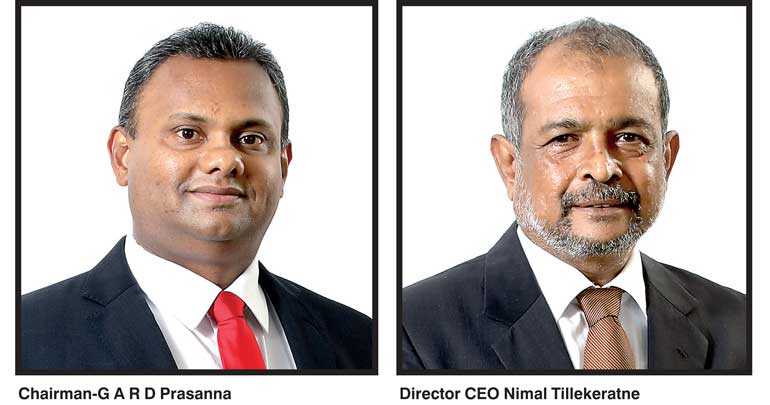Thursday Apr 25, 2024
Thursday Apr 25, 2024
Thursday, 1 November 2018 00:43 - - {{hitsCtrl.values.hits}}

Pan Asia Banking Corporation PLC, one of the fastest growing Sri Lankan commercial banks, yesterday reported its best-ever profit recorded for a nine month stretch anchored by solid growth in new loans, prudent margin and asset-liability management.
For the nine months ended 30 September, the Bank reported a profit after tax of Rs. 1,080 million, up by a solid 18% from the same period in 2017. The net interest income grew by a strong 21% on a year-on-year (Y-o-Y) basis to Rs. 4.43 billion, supported by better margins recorded amidst the rising cost of funds.
The net interest margin increased to 4.01% during this period from 3.61% in December 2017 as the Bank continuously reviewed the pricing of its asset and liability portfolio and managed them efficiently. This improvement is a testament to the Bank’s ability to recalibrate its asset portfolio from low yielding ones to high yielding ones in order to optimise the margins.
Meanwhile, for the quarter ended 30 September (3Q’18), the Bank reported earnings of Rs. 260.7 million on a net interest income of Rs. 1.61 billion compared to Rs. 301.3 million profit and Rs. 1.29 billion net interest income reported in the same quarter last year.
Higher credit costs set aside from profits on account of possible bad loans both during the quarter and during the nine months undermined the performance of the Bank during this period.
The better top line performance during the nine months is also a reflection of relatively strong growth in loan book of over Rs. 15 billion, which translates in to a robust growth of 13.5% in the loan book given the challenging market conditions prevailed during the period. The loan growth propelled the Bank’s asset base to Rs. 156.4 billion by the end of September, an increase of 13%.
“We recorded quite a solid growth in our loan book during the first nine months of 2018 amidst the many headwinds we faced during this period. I consider this achievement noteworthy because we recorded it amidst a moderation in sector loan growth and rising non-performing loans”, said Pan Asia Bank Director/Chief Executive Officer Nimal Tillekeratne.
Meanwhile, despite the rising non-performing loans in the industry, Pan Asia Bank managed its gross non-performing ratio at 4.83% by the end of September from 4.36% in December 2017.
Containing sharp increases in the non-performing loan ratio is praiseworthy when whole the industry has been going through a quite steep deterioration in the asset quality.
The Bank also increased its deposit base by Rs. 9.1 billion, anchoring much of the growth in the loans. Out of these total deposits, Current and Savings Account deposits – a key measure of the Bank’s performance in low cost funds – rose to 19.6% from just under 17.7% in December 2017, providing a much-needed boost to the Bank’s margins.
Continuing its legacy of being a truly innovative bank, during this period, the Bank launched the ‘Rising FD’ – a two-year fixed deposit product where the interest rates can only go up during the deposit period at six month intervals. This unique product is the only one of its kind in the market as this term deposit allows the deposit holder to hedge his or her interest rate risk at a time of rising interest rates and inflation. Rising FD became an instant success in an otherwise crowded market for term deposits and buttressed the Bank’s medium term fund base while minimising the maturity mismatches hitherto existed.
By the end of the first nine months, the Bank’s capital adequacy levels stayed above their regulatory minimums stipulated under BASEL III while Bank’s tier I and tier II capital ratios stood at 10.65% and 12.11%, respectively, compared to the regulatory minimums of 7.875% and 11. 875% for each. Pan Asia Bank is now exploring its options to raise further fresh capital to maintain growth while remaining on top of the higher capital requirements under the BASEL III accord, which comes into full effect at the start of 2019.